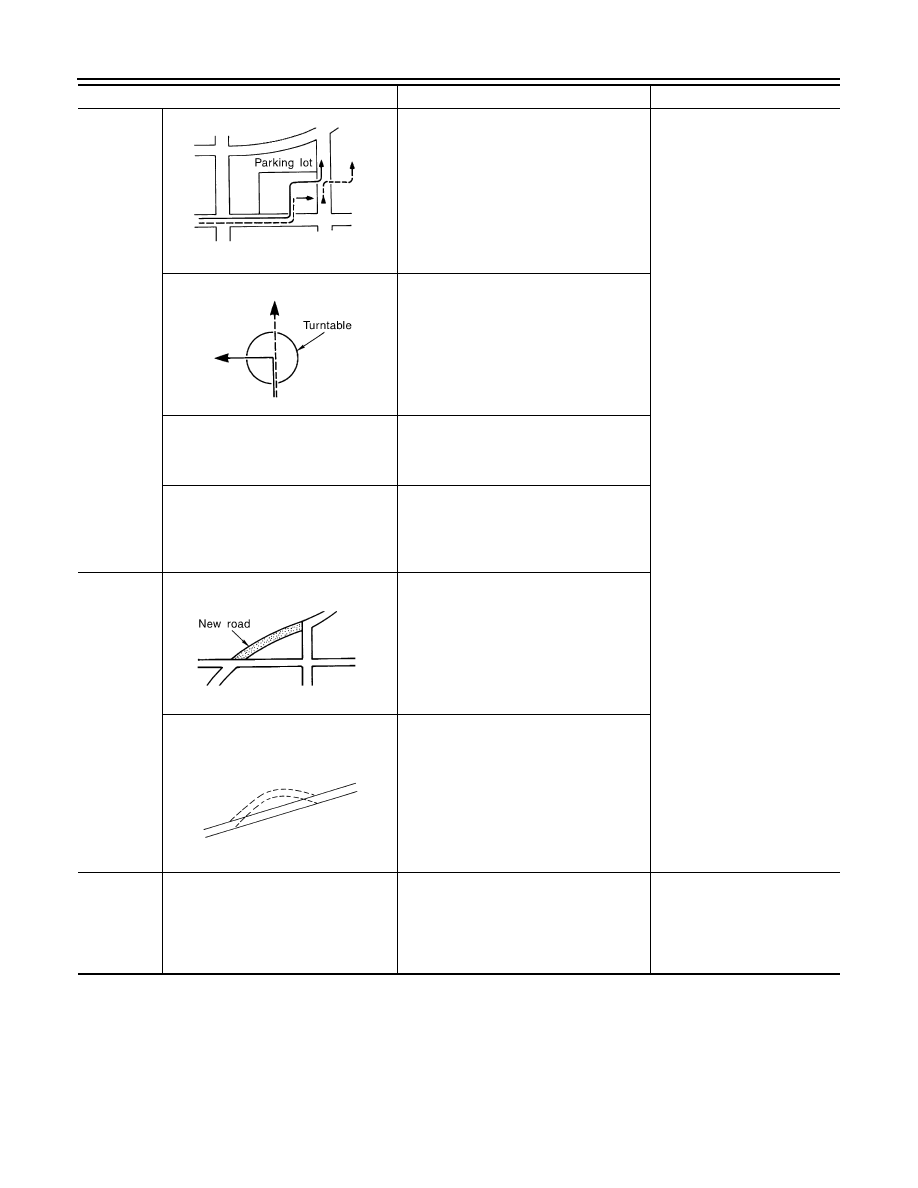Nissan Altima HL32 Hybrid. Manual - part 70

AV-272
< SYMPTOM DIAGNOSIS >
[BOSE AUDIO WITH NAVIGATION]
NORMAL OPERATING CONDITION
Place
In a parking lot
When driving in a parking lot, or other loca-
tion where there are no roads on the map,
matching may place the vehicle mark on a
nearby road. When the vehicle returns to
the road, the vehicle mark may have devi-
ated from the correct location.
When driving in circle or turning the steer-
ing wheel repeatedly, direction errors accu-
mulate, and the vehicle mark may deviate
from the correct location.
If after travelling about 10 km (6
miles) the correct location has
not been restored, perform lo-
cation correction and, if neces-
sary, direction correction.
Turntable
When the ignition switch is OFF, the navi-
gation system cannot get the signal from
the gyroscope (angular speed sensor).
Therefore, the displayed direction may be
wrong and the correct road may not be eas-
ily returned to after rotating the vehicle on a
turntable with the ignition OFF.
Slippery roads
On snow, wet roads, gravel, or other roads
where tires may slip easily, accumulated
mileage errors may cause the vehicle mark
to deviate from the correct road.
Slopes
When parking in sloped garages, when
travelling on banked roads, or in other cas-
es where the vehicle turns when tilted, an
error in the turning angle will occur, and the
vehicle mark may deviate from the road.
Map data
Road not displayed on the map screen
When driving on new roads or other roads
not displayed on the map screen, map
matching does not function correctly and
matches the location to a nearby road.
When the vehicle returns to a road which is
on the map, the vehicle mark may deviate
from the correct road.
Different road pattern
(Changed due to repair)
If the road pattern stored in the map data
and the actual road pattern are different,
map matching does not function correctly
and matches the location to a nearby road.
The vehicle mark may deviate from the cor-
rect road.
Vehicle
Use of tire chains
When tire chains are used, the mileage is
not correctly detected, and the vehicle mark
may deviate from the correct road.
Drive the vehicle for a while. If
the distance still deviates, ad-
just it by using the distance ad-
justment function. (If the tire
chain is removed, recover the
original value.)
Cause (condition) –: While driving ooo: Display
Driving condition
Remarks (correction, etc.)
SEL709V
SEL710V
SEL699V
ELK0201D